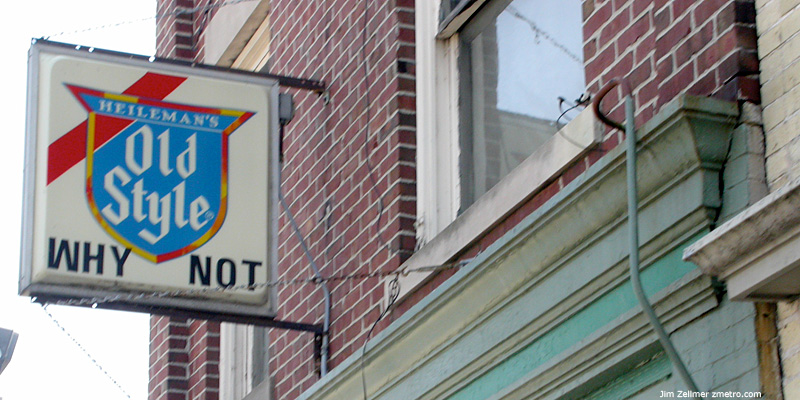WE’VE all heard the tales of the apple falling on Newton’s head and Archimedes leaping naked from his bath shrieking “Eureka!” Many of us have even heard that eBay was created by a guy who realized that he could help his fiancée sell Pez dispensers online.
The fact that all three of these epiphany stories are pure fiction stops us short. As humans, we want to believe that creativity and innovation come in flashes of pure brilliance, with great thunderclaps and echoing ahas. Innovators and other creative types, we believe, stand apart from the crowd, wielding secrets and magical talents beyond the rest of us.
Balderdash. Epiphany has little to do with either creativity or innovation. Instead, innovation is a slow process of accretion, building small insight upon interesting fact upon tried-and-true process. Just as an oyster wraps layer upon layer of nacre atop an offending piece of sand, ultimately yielding a pearl, innovation percolates within hard work over time.
“The most useful way to think of epiphany is as an occasional bonus of working on tough problems,” explains Scott Berkun in his 2007 book, “The Myths of Innovation.” “Most innovations come without epiphanies, and when powerful moments do happen, little knowledge is granted for how to find the next one. To focus on the magic moments is to miss the point. The goal isn’t the magic moment: it’s the end result of a useful innovation.”
Why Not?
 Classic Old Style beer sign with an appropriate tavern name.
Classic Old Style beer sign with an appropriate tavern name.
Thinking of Summer: Aix-en-Provence
 Thoughts of summer as Winter continues in Madison. Note the fashionable sushi delivery vehicle, a Smart Car and the smartly dressed pedestrian. Summer in Provence. Much more on Aix-en-Provence here [map]
Thoughts of summer as Winter continues in Madison. Note the fashionable sushi delivery vehicle, a Smart Car and the smartly dressed pedestrian. Summer in Provence. Much more on Aix-en-Provence here [map]
Technology’s Unintended Consequences
As GPS transceivers become common accessories in cars, the benefits have been manifold. Millions of us have been relieved of the nuisance of getting lost or, even worse, the shame of having to ask a passerby for directions.
But, as with all popular technologies, those dashboard maps are having some unintended consequences. In many cases, the shortest route between two points turns out to run through once-quiet neighborhoods and formerly out-of-the-way hamlets.
Scores of villages have been overrun by cars and lorries whose drivers robotically follow the instructions dispensed by their satellite navigation systems. The International Herald Tribune reports that the parish council of Barrow Gurney has even requested, fruitlessly, that the town be erased from the maps used by the makers of navigation devices.
A research group in the Netherlands last month issued a study documenting the phenomenon and the resulting risk of accidents. It went so far as to say that GPS systems can turn drivers into “kid killers.”
Carr makes an excellent point. One has to add some common sense to navigation systems. I used a TomTom in Europe last year. I found it very helpful – mostly, however, when we decided to wander around. The navigation system would then provide a route back to the hotel (which I had added as a predefined point prior to our departure).
Security vs. Privacy
If there’s a debate that sums up post-9/11 politics, it’s security versus privacy. Which is more important? How much privacy are you willing to give up for security? Can we even afford privacy in this age of insecurity? Security versus privacy: It’s the battle of the century, or at least its first decade.
In a Jan. 21 New Yorker article, Director of National Intelligence Michael McConnell discusses a proposed plan to monitor all — that’s right, all — internet communications for security purposes, an idea so extreme that the word “Orwellian” feels too mild.
The article (now online here) contains this passage:In order for cyberspace to be policed, internet activity will have to be closely monitored. Ed Giorgio, who is working with McConnell on the plan, said that would mean giving the government the authority to examine the content of any e-mail, file transfer or Web search. “Google has records that could help in a cyber-investigation,” he said. Giorgio warned me, “We have a saying in this business: ‘Privacy and security are a zero-sum game.'”
I’m sure they have that saying in their business. And it’s precisely why, when people in their business are in charge of government, it becomes a police state. If privacy and security really were a zero-sum game, we would have seen mass immigration into the former East Germany and modern-day China. While it’s true that police states like those have less street crime, no one argues that their citizens are fundamentally more secure.
County Fair Portraits
These portraits were made in a portable studio that was hauled from fair to fair in California and Arizona between 1976 and 1980. The studio was complete with darkroom and a shooting stage and it took a crew of three to run it: a shooter (me), a front person to handle customers and a darkroom person to develop and print the 4×5 inch negative. The entire process, when going smoothly, took about fifteen minutes.
A Conversation About Peak Oil
NATE HAGENS is an editor of The Oil Drum, an online community that seeks to raise awareness about energy issues. A Ph.D. candidate in Natural Resources at the University of Vermont, Hagens’s particular areas of interest are the principles of net energy and the bio-physiological factors that drive our energy demand.
MATT SAVINAR is the editor and writer of Life After the Oil Crash, a blog which paints a bleak picture of what life on earth will look like when natural oil supplies run out. Savinar recently received his J.D. from the University of California at Hastings College of the Law, and his work is quoted extensively on the floor of the United States Congress.
One article in this month’s issue of Texas Monthly centers on Matthew Simmons, a Houston investment banker described as the most fervent apostle behind the idea of peak oil. How does the apocalyptic world that Simmons and other energy pessimists foresee in the near future—massive food shortages, a falling standard of living, wars—compare to your own predictions? What does the world look like with less oil?
Steve Tabor has organized the desert into bite-size hikes for those unused to dry landscapes
The Desert Trail runs 656 miles through California. Steve Tabor of Alameda has alphabetized it into 26 weekend hikes, A to Z, starting at the Mexican border in winter. When he isn’t walking the barren landscape, Tabor, 58, is a pumper and operator at a vegetable oil refinery in Richmond.
“I got involved with a group called Desert Survivors, which is a desert protection organization. I became their president and started leading hikes for them. I got involved in the Desert Trail program, which was supposedly going to go from Mexico to Canada. They had no one to do the route work in California and Nevada.
For many years people were trying to figure out how to do this and there were many different concepts. One guy just wanted to carry no food and no water and try to do it. That doesn’t work for most people. We wanted to make it like a backpack trip that the majority of hikers would be able to do. I said, ‘Why don’t we just do it the way we’ve done it in Desert Survivors? Instead of having these 100-mile-long segments, have quick bites that people could do in two, three or four days. They should be able to carry enough water.’
33 Things That Make Us Crazy
Wired on air travel, and 32 other modern annoyance:
Ticket Counter: Expensive? If anything, flying doesn’t cost enough: The average domestic fare in spring 2007 was $326. That’s $50 less than a decade ago, after adjusting for inflation. During the same period, fuel costs nearly tripled. To stay in business, major carriers have aped the strategies of budget operators like Southwest. Largely gone are the free meals, blankets, and pillows. The savings have been passed along as lower ticket prices — at the price of your comfort.
Indian Company to Roll Out Massive WiMax Coverage
Even as Sprint tentatively rolls out the XOHM network here in the States, the largest Indian telecom company is planning to build a mobile WiMax network covering three states on the subcontinent capable of serving 250 million people. State-owned Bharat Sanchar Nigam Limited is leaning on Soma Networks to build the broadband-speed network in response to government requirement that 20 million broadband lines be in service by 2010. The WiMax rollout will first hit the largest and most-connected states, but BSNL is planning on extending the network if things go well.